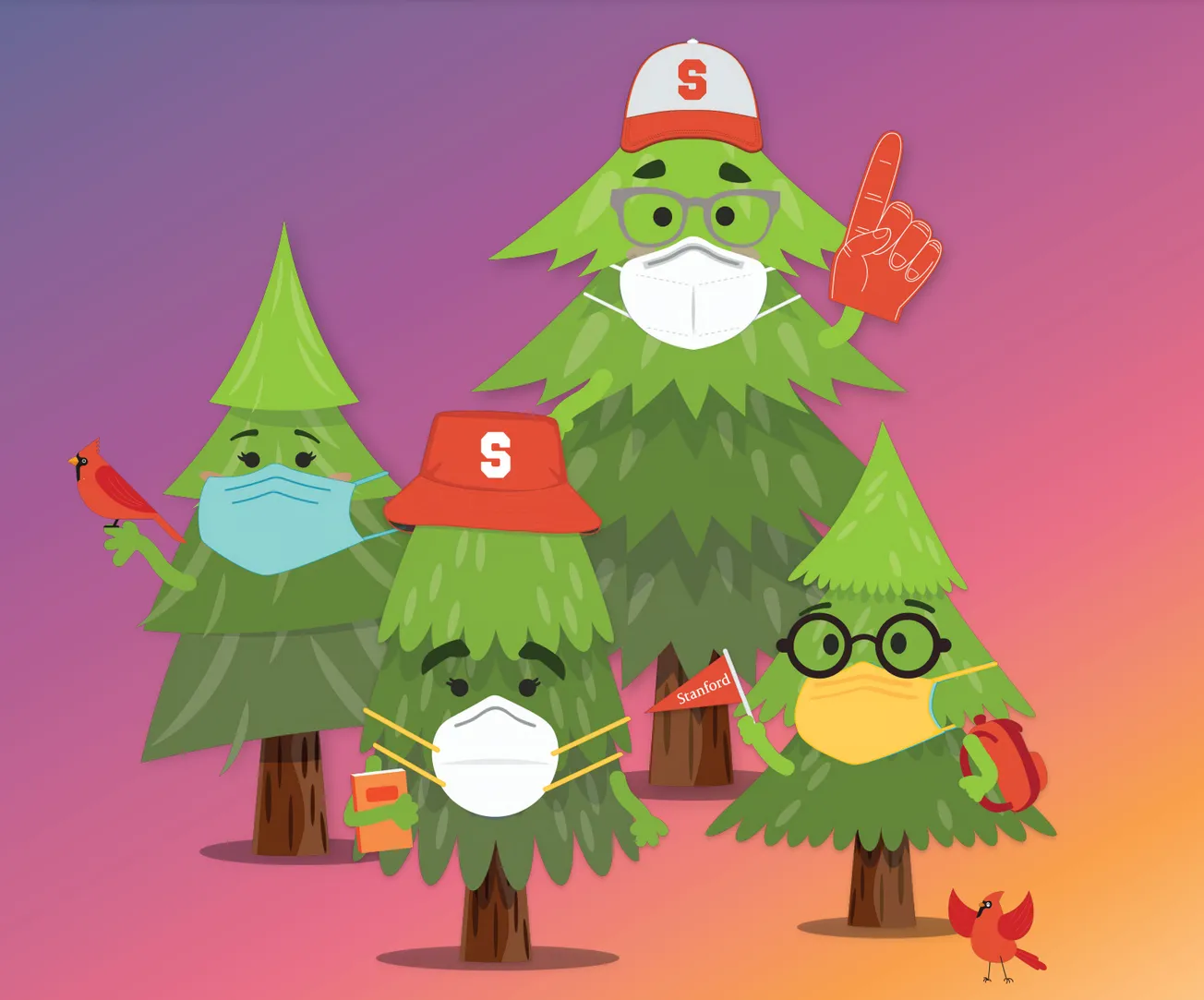Table of Contents
It’s been nearly three years since March 2020, when the pandemic began and Stanford sent students home. Vaccines became widely available over two years ago, and more than a year has passed since the university mandated its overwhelmingly young and healthy student body to get booster shots. Any reasonable individual would assume that the pandemic would be fully in the rearview mirror at Stanford.
But for anyone who has followed the news for the past year, reasonable and Stanford are two words infrequently found together. Last year, students faced months of all-campus mask mandates and weekly required COVID testing. To this day, Stanford still “strongly recommends masking” indoors. The administration also leaves classroom masking policies up to professors. Alas, it shouldn’t be shocking that many Stanford professors seem hell-bent on instituting a forever-COVID mentality, where masking is a ritualistic part of daily life.
After discovering that the professors in two of my science classes decided to require masks, I decided to run a poll on Fizz to see how common mask mandates are on the farm. Nearly half of Stanford students report being in a class that requires masks.
One might ask, masks are just a piece of cloth and they’re not that uncomfortable, so why not just strap one on and go on with life? To put it simply, the mask mandates embraced by a considerable number of faculty and administrators are an embrace of falsehood and pointless fear—precisely what a university ought to stand against.
Forcing students to submit to pointless regulations saps the energy and creativity from the classroom. When kids can’t even see the facial expression of their friend sitting next to them in class, it should be no surprise that a general malaise has descended on Stanford. The mentality that leads to forced masking (extreme risk aversion) is identical to the one administrators embraced to destroy so much of what made Stanford unique and special.
On the first day of classes this quarter, I was treated to a scene befitting a Saturday Night Live skit in my introductory Science, Technology, and Society course. At the beginning of class, our maskless professor—doing her best Stacy Abrams impression—comes up to the stage and announces, “Reminder, if you don’t have a mask please come up [to the front] and get one.”
Not content with letting the matter be, a few minutes later, still not wearing a mask, she announced, “Masks are required in the classroom, if you don’t have a mask with you please come and get one. Please put your mask on. Thank you.” And fifteen minutes into class, apparently seeing some brave souls in the audience, she felt compelled to announce, “Just a reminder, everyone should be wearing a mask.” Of course, ‘everyone’ used here excludes one person—the professor—who for some undisclosed reason is exempt from her own mask mandate.
Given the professors seemed very concerned about the Science™ (the only settled, unquestionable, or unchangeable discipline), I wanted to be sure to alert them of the recently released study that found “wearing masks in the community probably makes little or no difference to the outcome of influenza-like illness.” In my email, sent Monday morning, I mentioned the study and wrote in part, “it seems that the justification given in the syllabus for the classroom mask requirement holds no weight, as masks will not help ‘protect our classroom and the broader Stanford community.’ As a result, given there is no clear benefit that stems from a mask requirement, I was wondering when you all were planning on joining the vast majority of courses at Stanford in dropping such a mandate.”
I didn’t hear back from either professor in time for Monday’s class, though sitting in lecture that afternoon I had reason to believe it was read. The professor finally followed her own rule: she wore a mask during class. On Wednesday morning, I finally received a response that questioned the veracity of the study I sent and claimed, “there are also peer-reviewed studies that establish masks as effective at reducing the spread of respiratory illness, as well as related data that indicates surges in respiratory illness rates in schools or other areas shortly after they dropped masking requirements.” She also included a review of research authored by a woman who works for multiple mask manufacturers.
The takeaway from all of this is that in February 2023, at one of the best universities in the world, the people tasked with educating the next generation of leaders would rather double down on their embrace of falsehood than reckon with basic facts. The coronavirus is not deadly and masks don’t do anything.
Much has been written about the demise of community, Stanford’s eerily silent weekend nights, and the bureaucratic hurdles that contribute to that reality. But I think the problem goes deeper than administrative red tape. When kids have been forced to believe—or at least pretend—that 2+2=5, that masks actually do anything, it is no surprise that the creative spirit that made Stanford unique was squashed as well. To see this, walk into any one of the hundreds of classes that still mandate masks and look at the students: muzzled.









